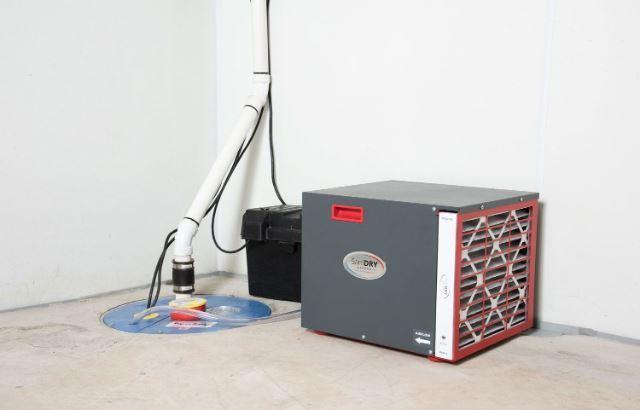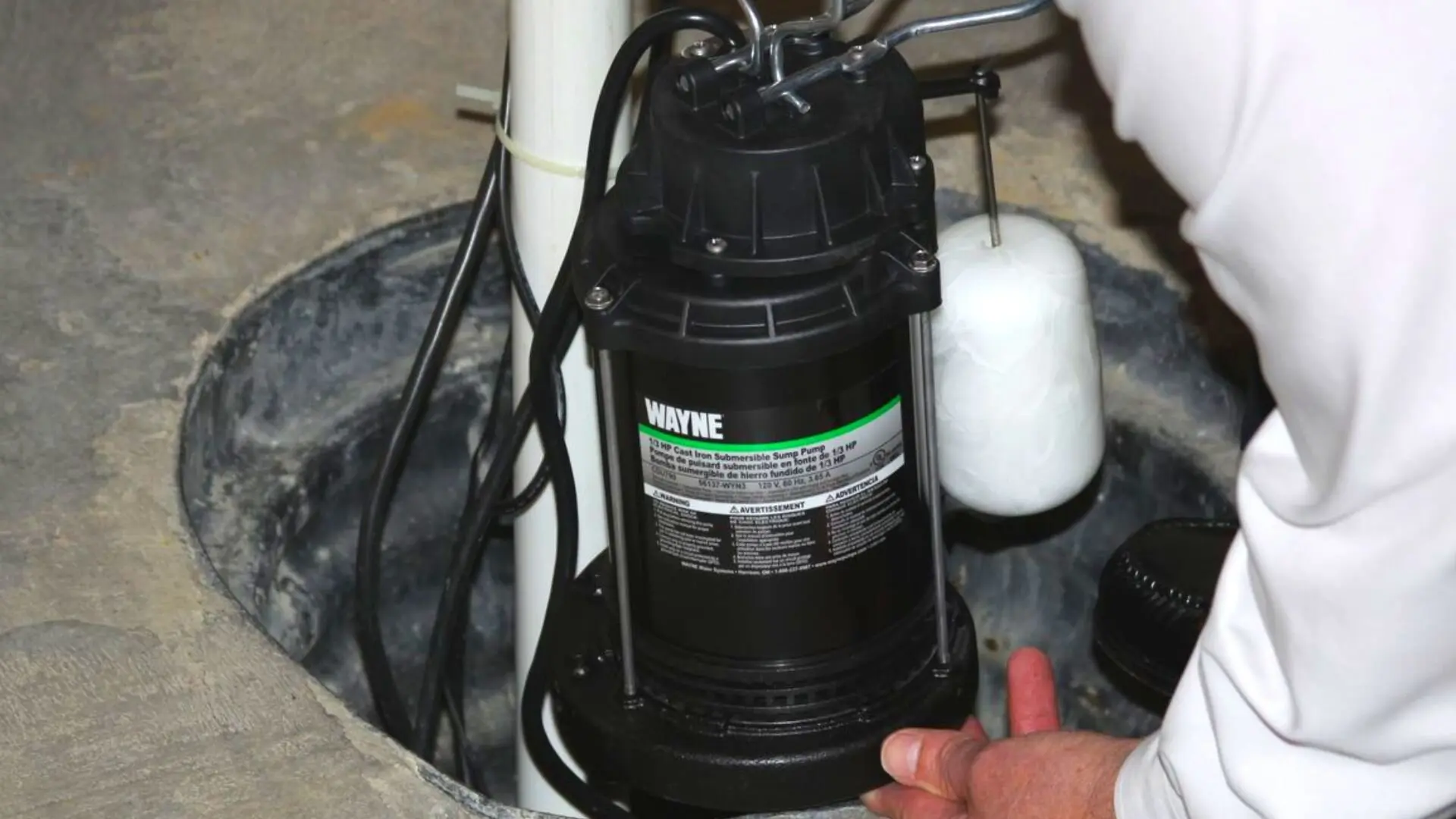Practical Tips for Cleaning a Sump Pump
Practical Tips for Cleaning a Sump Pump
Blog Article
We have uncovered this article pertaining to Keep Your Sump Pump Clean, It'll Keep You Dry listed below on the net and decided it made good sense to quickly share it with you in this article.

Sump pumps are essential components in many homes, especially in locations prone to flooding or extreme moisture. They aid prevent water damages by efficiently getting rid of excess water from cellars or crawl spaces. However, like any other appliance, sump pumps need routine upkeep to ensure they function successfully when needed the most. Cleansing your sump pump is an essential part of its maintenance, and understanding exactly how to do it properly can conserve you from costly repairs and potential catastrophes.
Introduction
Maintaining a clean sump pump is crucial for its correct functioning and longevity. Neglecting this necessary task can cause blockages, malfunctions, and eventually, water damages to your property. Consequently, finding out how to clean up a sump pump is essential for house owners who rely on these gadgets to keep their cellars completely dry and safeguarded.
Recognizing the Sump Pump
Prior to diving into the cleaning process, it's necessary to have a fundamental understanding of exactly how a sump pump functions. Commonly mounted in a pit or container listed below the basement floor, a sump pump contains several key parts, consisting of a pump, a float switch, and a discharge pipe. When water collects in the pit, the float switch activates the pump, which then pumps the water out via the discharge pipe, far from the structure's structure.
Indications of a Dirty Sump Pump
Understanding when your sump pump needs cleansing is vital for avoiding potential malfunctions. Some usual indications that suggest a dirty sump pump consist of unusual sounds throughout operation, reduced water circulation, and visible particles in the pit. If you discover any one of these symptoms, it's necessary to clean your sump pump quickly to prevent any kind of more problems.
Preparing for Cleaning
Before you start cleaning your sump pump, it's important to take some security precautions. Beginning by turning off the power to the pump to stay clear of any type of electrical mishaps. Additionally, put on appropriate protective equipment, such as gloves and safety glasses, to protect yourself from dust, particles, and potential pathogens.
Step-by-step Guide to Cleansing a Sump Pump
Shutting Off the Power
Begin by disconnecting the power supply to the sump pump to avoid any type of accidents while cleansing.
Eliminating Particles and Dust
Make use of a container or a scoop to remove any visible debris, dust, or debris from the sump pit. Dispose of the particles effectively to avoid it from obstructing the pump or the discharge pipeline.
Cleansing the Pump and Float Switch Over
When the pit is free from debris, carefully remove the pump from the pit. Inspect the pump and the float switch for any type of indicators of damages or wear. Utilize a soft brush or towel to clean the surfaces and get rid of any type of collected crud.
Purging the System
After cleaning the pump and float button, flush the sump pit with tidy water to eliminate any staying dust or sediment. This will assist guarantee that the pump operates efficiently and effectively.
Checking for Correct Functioning
Prior to reinstalling the pump, carry out a fast examination to make sure that the float button triggers the pump correctly. Put some water right into the sump pit and observe the pump's procedure. If everything is operating correctly, you can reassemble the pump and reconnect the power supply.
Maintenance Tips to Keep Your Sump Pump Clean
Along with routine cleansing, there are a number of upkeep tips you can follow to keep your sump pump in optimal problem:
Conclusion
Cleaning your sump pump is a crucial element of its maintenance and makes certain that it runs effectively when you need it one of the most. By following the steps described in this guide and integrating regular maintenance right into your regimen, you can expand the lifespan of your sump pump and shield your home from water damage.
6 STEPS ON HOW TO CLEAN A SUMP PUMP PROPERLY
UNDERSTANDING SUMP PUMPS
Your sump pump plays a crucial role in protecting your home by managing and removing excess water. It primarily functions as a “shield”, guarding your basement against the damaging effects of water accumulation. The pump is housed in a sump pit in the lowest part of your basement, and its job is to pump out any water that collects there.
During heavy rainfalls or when snow melts rapidly, water can infiltrate your basement, posing potential risks like flooding, structural damage, and harmful mold growth. Here, the sump pump springs into action, pumping out the intruding water and directing it away from your home.
SAFETY FIRST
Before cleaning, remember to prioritize safety. Disconnect the sump pump from the power source to prevent any accidental electric shocks. Also, wear sturdy gloves to protect your hands from any sharp or dirty components within the pump.
REMOVE THE SUMP PUMP
After ensuring your safety, the next step is to remove the sump pump from its pit. Doing this might require careful maneuvering as you don’t want to damage any pump components. Once removed, clean the sump pit to remove any accumulated debris or sludge.
INSPECT THE PUMP
Inspect the pump for any visible signs of wear or damage. Check the power cord, float switch, and impeller housing. If any components look worn out or damaged, consider replacing them to ensure optimal performance.
CLEAN THE PUMP
Thoroughly clean the pump with warm, soapy water. Make sure to rid it of any dirt, gravel, or other debris that might impede its performance. You can use a toothbrush to clean the small, hard-to-reach parts of the pump.
REINSTALL THE SUMP PUMP
Reinstall the pump into the sump pit Make sure it’s positioned correctly to remove the water effectively Once it’s back in place, reconnect it to the power source TEST THE PUMP
Finally, pour some water into the pit to ensure the pump works correctly. It should start automatically and begin pumping out the water; if it doesn’t, check the power source and the positioning of the pump.
Remember, while cleaning your sump pump is an essential part of home maintenance, hiring a professional plumber for a thorough inspection and cleaning at least once a year is also important. This will ensure that your pump is in optimal condition, ready to protect your home from potential water damage.
BEST PRACTICES FOR CLEANING SUMP PUMP DISCHARGE PIPES
Regular Inspection: Regularly inspect your discharge pipes, especially during heavy rainfall or snowmelt periods. Look for any signs of blockage or damage. Early detection of problems can prevent serious issues down the line. Periodic Cleaning: Over time, sediment and debris can accumulate in the discharge pipes, impeding the flow of water. Regular cleaning helps keep the pipes clear and functioning efficiently. You can use a high-pressure water jet to effectively clean the pipes. Insulation During Winter: In colder climates, discharge pipes can freeze, blocking the outflow of water. Protect your discharge pipes from freezing temperatures by insulating them with foam pipe insulation. This will ensure the sump pump can continue to discharge water even in freezing conditions. Proper Positioning: The discharge pipe should be positioned to direct water away from your home’s foundation. Improper positioning can lead to water seeping back into the basement. Ensure the pipe is long enough and angled correctly. Installation of a Check Valve: A check valve prevents water from flowing back into your sump pit after the pump has pushed it out. Installing a check valve helps maintain the efficiency of your sump pump and reduces the risk of flooding. Minimize Pipe Turns: Every curve or turn in the discharge pipe can decrease the efficiency of water flow. By minimizing turns and bends in your discharge pipe, you can increase the efficiency of your sump pump. https://www.fullspeedplumbing.com/how-to-clean-a-sump-pump-properly9999/

As a serious reader on Cleaning & Maintenance Tips for Your Home's Sump Pump, I was thinking sharing that article post was a great idea. If you please take the time to promote this content if you liked it. Bless you for being here. Return soon.
Schedule Today! Report this page